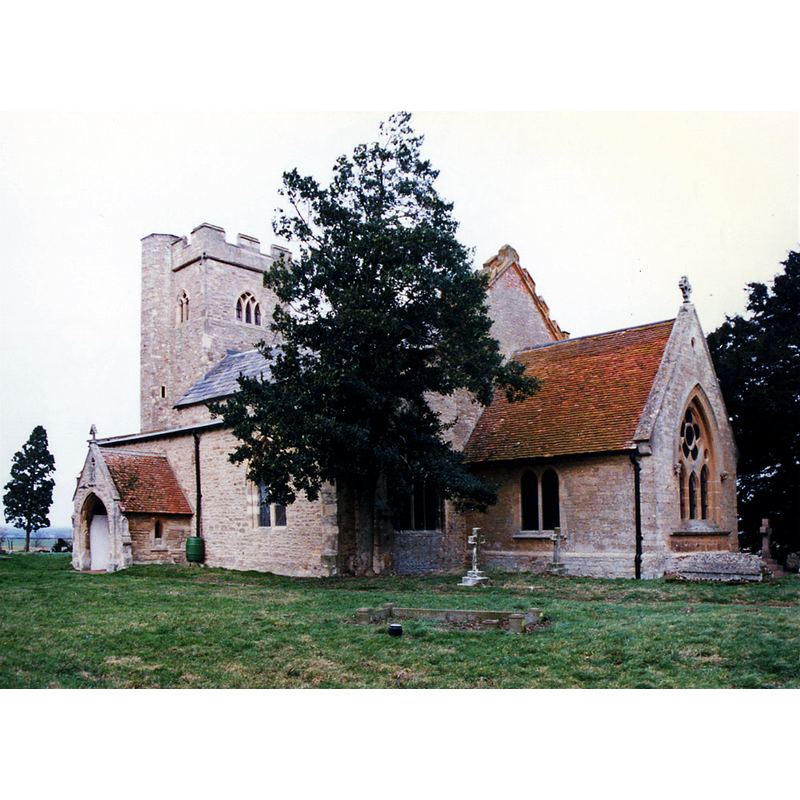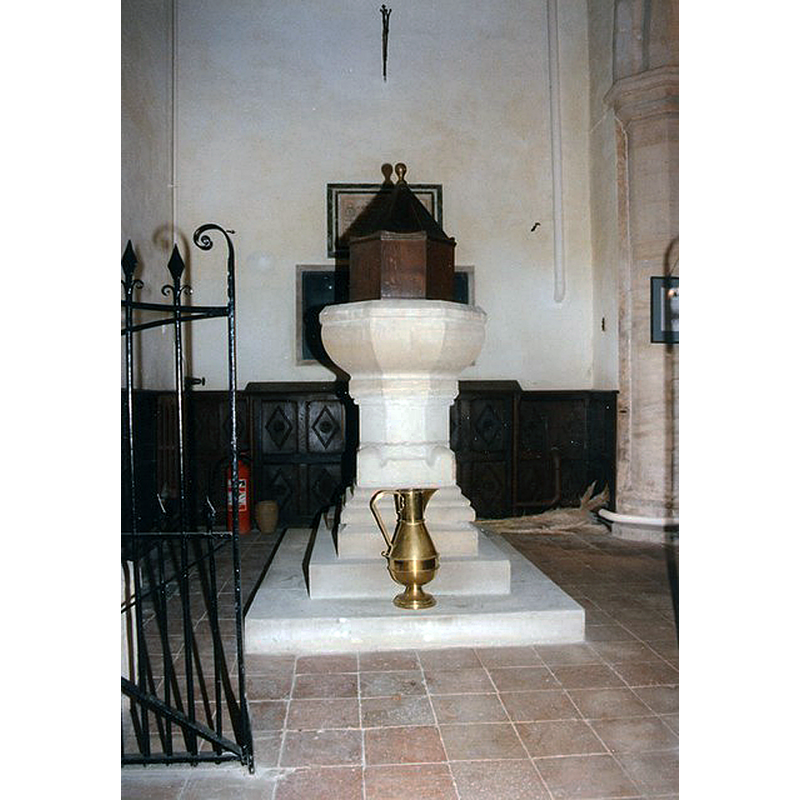Moulsoe / Moleshou / Mouleshou / Moleshov / Moullesso / Moulshoe / Moulso / Muleshou / Muselo

Image copyright © John Salmon, 2012
CC-BY-SA-2.0
Results: 5 records
design element - motifs - moulding
design element - motifs - stop
view of church exterior - southeast view
view of church interior - nave - looking east
view of font and cover in context
Scene Description: only the stem is supposed to be medieval, the rest a 19thC replacement -- odd-looking font cover
Copyright Statement: Image copyright © John Salmon, 2012
Image Source: photograph taken April 1997 by John Salmon [www.geograph.org.uk/photo/3267184] [accessed 24 February 2016]
Copyright Instructions: CC-BY-SA-2.0
INFORMATION
FontID: 17360MOU
Object Type: Baptismal Font1
Church/Chapel: Parish Church of the Assumption the Blessed Virgin Mary [aka St. Mary's]
Church Patron Saints: The Assumption of St. Mary
Church Location: Newport Road, Moulsoe, Milton Keynes MK16 0HW
Country Name: England
Location: Buckinghamshire, South East
Directions to Site: Located off the M1, across from Milton Keynes, 4 km ESE of Newport Pagnell, by the Beds. border
Ecclesiastic Region: Diocese of Oxford
Historical Region: Hundred of Moulsoe [in Domesday] -- Hundred of Newport
Font Location in Church: [cf. FontNotes]
Century and Period: 13th - 14th century [composite font?], Medieval [composite]
Font Notes:
Click to view
There is an entry for Moulsoe [variant spelling] in the Domesday survey [http://opendomesday.org/place/SP9142/moulsoe/] [accessed 24 February 2016], but it mentions neither cleric nor church in it. Sheahan (1862) quotes Willis' dating of the church towards the end of Edward III's reign [1327-1377], and notes: "The font is ancient and octagonal". The Victoria County History (Buckingham, vol. 4, 1927) notes: "The present building has probably been developed from a 12th-century church [...] In 1885–90 the chancel and porch were rebuilt and the church restored [...] The font has a modern bowl on a 14th-century octagonal stem, which is moulded at the top and has large rounded stops at the bottom." [NB: Sheahan may have seen the original font before the late-1880s' renovation; the modern bowl noted in the VCH may date from that renovation -- we have no information on the whereabouts of the older one, although at the time of the RCHM survey both, the medieval and the 19th-century fonts appear to have been around]. An entry in the Newport Pagnell Parish site [www.npparish.org.uk/Blog/moulsoe.html] [accessed 24 February 2016] mentions "a fourteenth-century octagonal font stem" in the Mulsoe church.
COORDINATES
Church Latitude & Longitude Decimal: 52.0667, -0.679
Church Latitude & Longitude DMS: 52° 4′ 0.12″ N, 0° 40′ 44.4″ W
UTM: 30U 659090 5770999
MEDIUM AND MEASUREMENTS
Material: stone, N.A
Font Shape: octagonal (mounted)
Basin Interior Shape: round
Basin Exterior Shape: octagonal
LID INFORMATION
Material: wood
Apparatus: no
Notes: octagonal with plain vertical sides with a pyramidal top, also octagonal; ball finial
REFERENCES
Victoria County History [online], University of London, 1993-. Accessed: 2011-04-15 00:00:00. URL: https://www.british-history.ac.uk.
Sheahan, James Joseph, History and topography of Buckinghamshire, comprising a general survey of the county, preceded by an epitome of the early history of Great Britain, London; Pontefract: Longman, Green, Longman, and Roberts; William Edward Bonas [...], 1862

